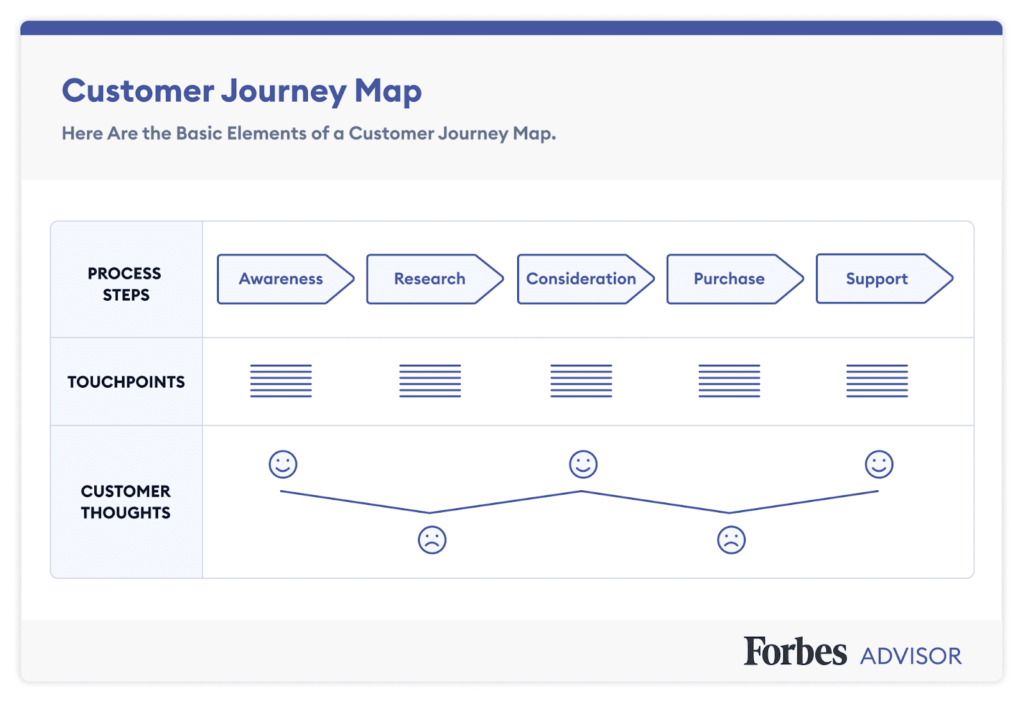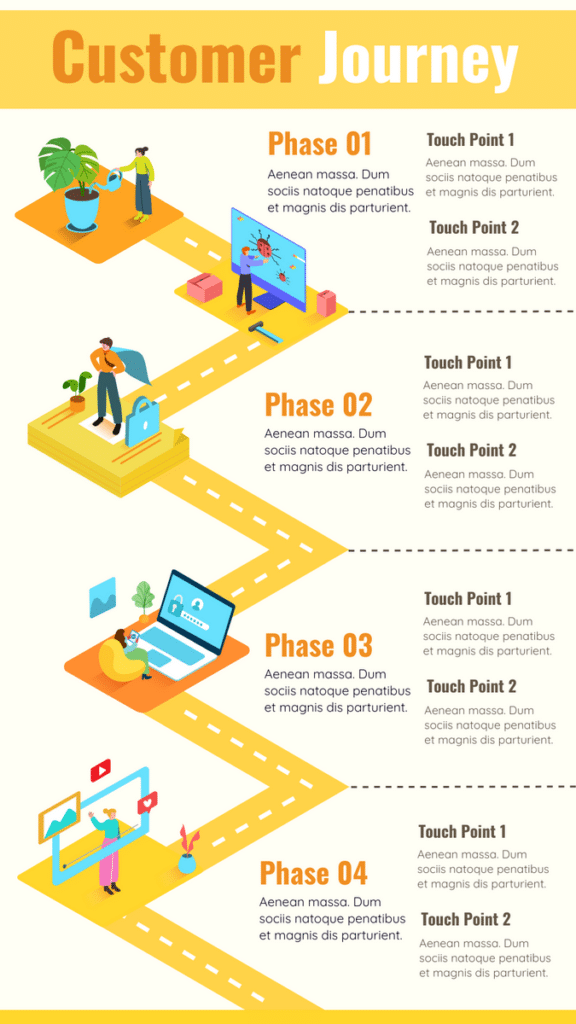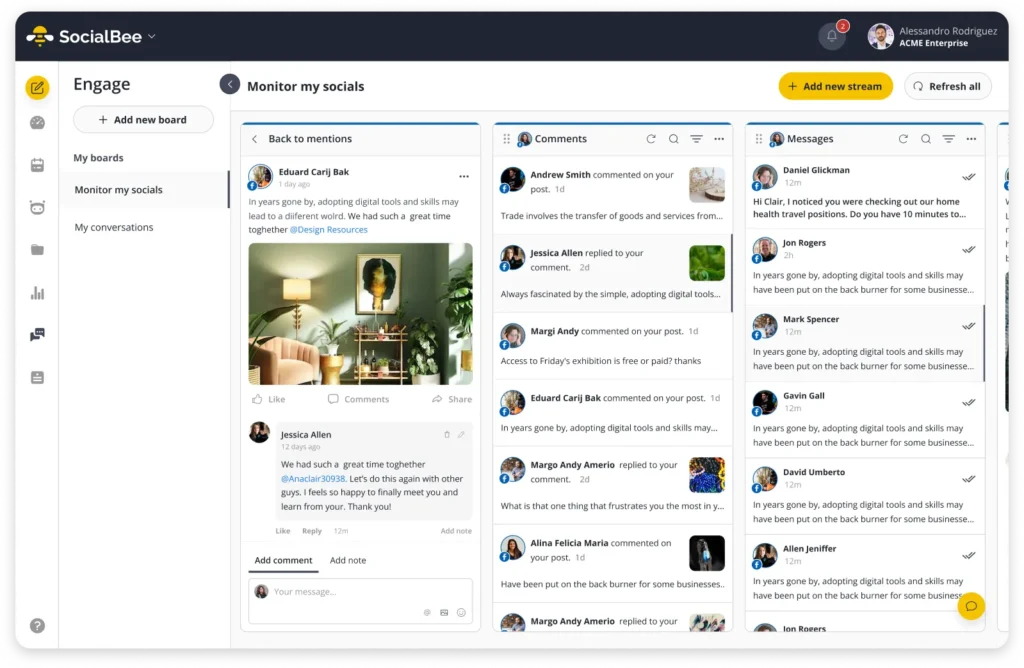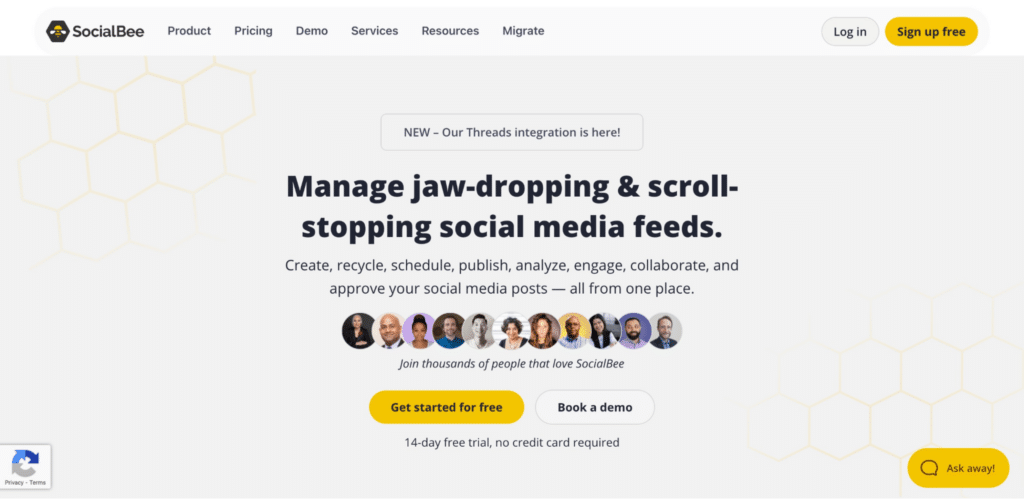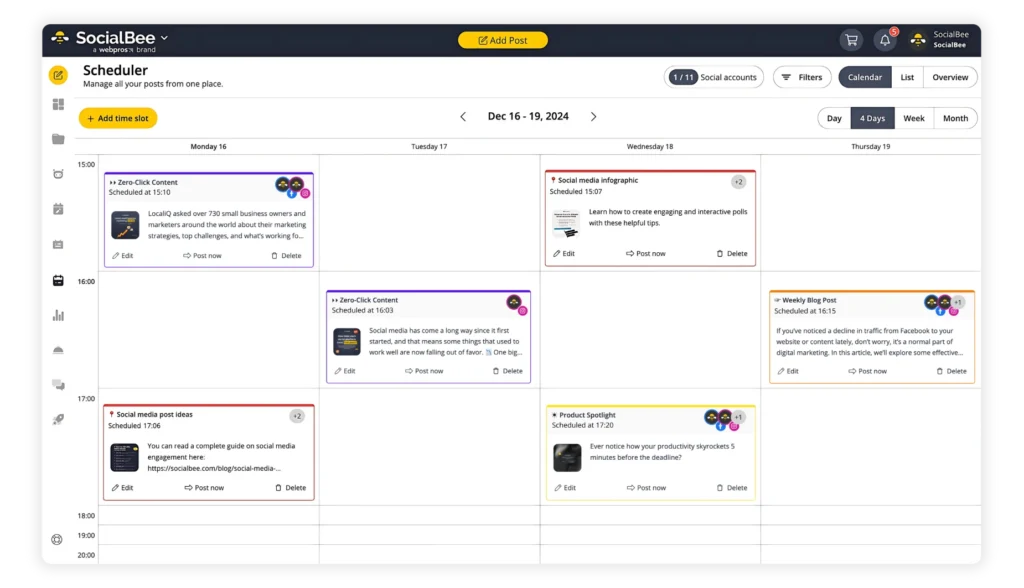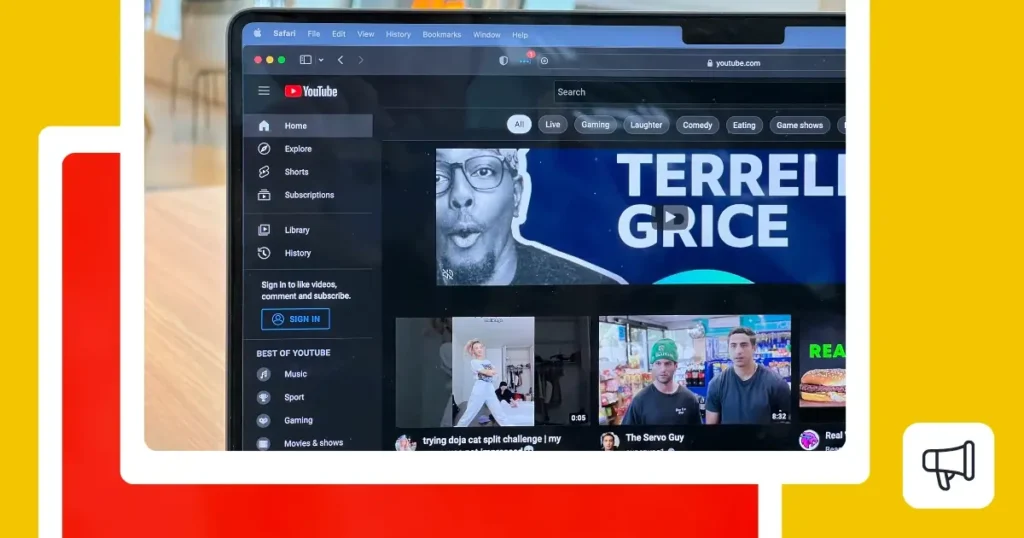
Guest Author
Understanding customer touchpoints is essential for enhancing your customer experience (CX). Effective management of these touchpoints can significantly impact your business.
Even if individual interactions are positive, overall satisfaction with the end-to-end journey can be as low as 60% if these touchpoints aren’t well integrated.
To help you get started, we’ve identified the ten most important digital marketing touchpoints to improve conversion rates and customer satisfaction. Ready to start engaging with potential and existing customers?
We’re SocialBee LABS SRL, part of WebPros. We use the information you provide to share relevant content and product updates, as outlined in our Privacy Policy. You can opt out anytime.

Short Summary
- Customer touchpoints are any step in a customer’s lifetime plan where they engage with your brand. This process starts from the very beginning, such as when customers come across your content, and continues even after they have stopped using the purchased product.
- Making the most out of customer touchpoints at various stages of the journey, from awareness to post-purchase, is important for improving CX, driving sales conversions and boosting customer loyalty.
- The most important digital marketing touchpoints include your website, social media, email marketing, SEO, content marketing, paid advertising, mobile experience, customer support, and customer reviews and testimonials.
- Providing accessible and efficient customer support through various channels like live chat, social media messaging, email, and phone is essential for customer satisfaction and retention, particularly for complex products and services.
What Are Customer Touchpoints?
Customer touchpoints are any step in a customer’s lifetime plan where they engage with your brand. This process starts from the very beginning, such as when customers first search for SaaS content, and continues even after they have stopped using the purchased product.
Digital marketing extends beyond the initial interest in purchasing. Customers will encounter touchpoints throughout your sales funnel, and the interactions they have post-purchase are crucial for retention.
Touchpoints can be either direct (advertising, email marketing) or indirect (like social media, blogs, forums, reviews).
Why Are Customer Touchpoints Important?
Now that you know a little bit more about the meaning of customer touchpoints, it’s time to think about why they’re so important.
Here are some of the benefits of optimizing your customer touchpoints:
- Enhance the overall customer journey
- Personalize content for better customer engagement
- Boost conversations through targeted marketing efforts
- Provide valuable insights into customer touchpoints
1. Enhance the Overall Customer Journey
Making your customer journey smooth and enjoyable can turn first-time buyers into loyal customers. By mapping out the journey from start to finish and fixing any rough patches—like a clunky checkout process or slow customer service responses—you help reduce customer drop-offs.
Adding simple touches, such as a thank you note after a purchase or a quick feedback survey, makes customers feel valued and more likely to stick around.
2. Personalize Content for Better Customer Engagement
When you personalize your communications based on customer data, like past purchases or browsing history, your marketing messages become more effective.
For example, if you send email recommendations that match a customer’s interests, they’re more likely to engage. Using tools to track how customers interact with your website can also help you tailor their online experience, showing them products or offers they’re more likely to be interested in.
3. Boost Conversions through Targeted Marketing Efforts
Targeting your marketing efforts more effectively can lead directly to more sales. By figuring out which touchpoints lead to purchases—like specific social media ads or promotional emails—you can focus more on what works.
For instance, enhancing your most successful email campaigns or increasing your retargeting ad spend can pull in more customers ready to buy.
4. Provide Valuable Insights into Customer Behavior
Keeping a close eye on how customers use and respond to different touchpoints gives you a wealth of insights.
This can guide you to make smarter decisions in both marketing and customer service. Say you notice a lot of customers need help with a certain product feature.
Creating a tutorial video could reduce the number of support calls and improve user satisfaction, saving you time and resources.
How Do You Identify Customer Touchpoints?
To identify customer touchpoints, examine the customer journey, study interactions, and use feedback to refine your approach. Focus on your main channels like your website and social media to enhance the overall customer experience.
Here are the steps you need to take to identify customer touchpoints:
- Map the customer journey
- Analyze customer interactions
- Identify key channels
- Categorize touchpoints
- Evaluate customer feedback
- Monitor competitor touchpoints
1. Map the Customer Journey
The customer’s journey typically includes the following stages:
- Awareness: This is the stage where potential customers first learn about your brand. Touchpoints here include advertising, social media posts, and word-of-mouth.
- Research: At this stage, customers are looking for more information about your products or services. They interact with your website, read blog posts, and check out reviews.
- Consideration: Customers are comparing your offerings with competitors. Touchpoints include product demos, webinars, and detailed product pages.
- Purchase: This is the point where the customer decides to buy. Key touchpoints include the checkout process, in-store interactions, and customer service.
- Support: Post-purchase, customers may need help or want to provide feedback. Touchpoints include customer support, follow-up emails, and feedback surveys.
Create a customer journey map to visually represent each phase and the corresponding touchpoints.
Here’s how it can look:
This helps in understanding the flow and identifying gaps or areas for improvement.
2. Analyze Customer Interactions
Collect data from various sources such as website analytics, CRM systems, customer feedback, and social media interactions. This data provides insights into how and where customers engage with your brand.
You could also conduct customer feedback surveys and ask customers about their experiences. Questions should focus on identifying specific interactions they had with your brand at different stages of their journey.
Try out SocialBee’s Engage Module to supercharge your data collection and analysis!
This handy tool helps you keep tabs on brand mentions, stay connected with community feedback, and quickly tackle questions or issues by responding to comments and DMs. It’s all about getting a better handle on what your customers are saying.
Engage with your audience from SocialBee’s centralized dashboard.
3. Identify Key Channels
Identifying key customer touchpoints involves recognizing the channels where customers interact with your brand, such as your website, social media, email marketing, online ads, and reviews.
To begin, collect data using tools like Google Analytics for website traffic, social media management tools for engagement, and email marketing software for open rates.
Additionally, social media platforms themselves provide valuable insights. Conduct customer surveys to understand preferences and analyze competitor strategies for additional insights.
Once you have identified these channels, optimize them to enhance the customer experience. Ensure your website is fast, easy to navigate, and SEO-friendly. Create engaging social media content, promptly respond to followers, and use targeted ads. Personalize email content, automate workflows, and maintain relevance.
Furthermore, refine online ad targeting, test designs, and manage budgets efficiently. Encourage and respond to reviews, using feedback to address issues and highlight strengths. This approach will increase customer satisfaction and foster brand loyalty.
4. Categorize Touchpoints
There are three categories of customer journey touchpoints to consider:
- Pre-Purchase: These occur before a purchase, such as advertising, social media interactions, content marketing, and customer reviews. To optimize these touchpoints, invest in targeted advertising, engage with potential customers on social media, create valuable content addressing customer pain points, and respond to customer reviews to build trust.
- Purchase: These occur during the purchase process, including the website checkout page, in-store interactions, and payment systems. Ensuring a smooth purchase experience is key for customer satisfaction. Optimize your website checkout process, train the sales reps of your brick and mortar store to provide excellent service, and ensure payment systems are reliable and secure.
- Post-Purchase: These occur after a purchase, like customer support, follow-up emails, and feedback surveys. Effective post-purchase interactions can turn one-time buyers into loyal customers. Ensure helpful interactions with your customer service representatives, send personalized follow-up emails, and collect feedback through surveys to continuously improve.
By understanding and optimizing these touchpoints, businesses can enhance the overall customer journey, leading to increased satisfaction and loyalty.
5. Evaluate Customer Feedback
Encourage customers to provide feedback on their experiences at different touchpoints. Use this feedback to identify strengths and areas needing improvement.
You should also monitor every social media platform and review site to understand customer sentiment and identify frequently mentioned suggestions.
6. Monitor Competitor Touchpoints
Analyze how competitors engage with their customers. Identify their touchpoints and assess their effectiveness. This can provide insights into potential improvements for your own touchpoints.
10 Most Important Digital Marketing Touchpoints
Optimizing the various points where a customer interacts with your brand is super important for enhancing their overall experience. These interactions play a significant role in shaping a customer’s journey from awareness to loyalty. But first, you need to know what are the most important ones.
Here are 10 examples of customer touchpoints you should focus on:
- Website
- Social media
- Email marketing
- Search engine optimization
- Blog posts
- Paid advertising
- Mobile experience
- Customer support
- Customer reviews and testimonials
- Post-purchase follow-up
1. Website
Your website is one of the most important elements in your digital marketing toolkit. There’s no point in putting effort into generating traffic, for instance, if potential customers aren’t landing on a well-designed and effective website.
To optimize your website:
- Focus on user experience: Start from the point of view of your users. Do they have all the information they need to understand your business?
- Intuitive design: Ensure the design is user-friendly and navigation is straightforward.
- Optimize for all devices: Make sure the site works well on both desktop and mobile, as customers increasingly expect sites to be optimized for phones.
- Fast loading times: Improve site speed to enhance user experience and reduce bounce rates.
- Clear calls to action: Use prominent and compelling calls to action to guide users towards desired actions.
For example, here’s the call to action you’ll see if you end up on our website:
You should ensure that your product pages are designed with conversions in mind. Look at examples of SaaS businesses for good practices such as having clear calls to action, utilizing high-quality images, and including in-depth product descriptions.
2. Social Media
It’s becoming more and more common for the sales process to start with social media, meaning that channels such as Instagram and TikTok are integral parts of the marketing landscape. You should therefore optimize your social media presence across all the platforms that you use.
To optimize your social media presence, follow these strategies:
- Be active on multiple platforms to reach a broader audience.
- Adjust your messaging to suit the target audience on each platform. For example, younger customers may prefer TikTok over Facebook.
- Develop content that is shareable and interactive to attract and engage followers.
- Engage with customer comments and messages to build relationships and trust.
- Use social media to establish and reinforce your brand identity from the start of the customer journey.
Want to make managing your social media easier? Try SocialBee.
Start by creating engaging content that resonates with your audience. Then, plan and schedule your posts across all your platforms, ensuring consistency without the hassle of manual posting.
With SocialBee, you can manage multiple accounts from one place, engage with your audience by quickly responding to comments and DMs, and track your performance to optimize your strategy—all within one platform.
Schedule your social media content with SocialBee!
3. Email Marketing
Another common customer touchpoint in the sales process is email marketing. This refers to any communication between your sales team and the customer, whether that’s advertising discounts or reminding users of an abandoned cart.
For example, consider this email from Grammarly, offering a 45% discount on any plan:
This type of email serves a dual purpose: it both promotes a time-sensitive offer and reinforces the value of the service. By highlighting the benefit (clarity in communication) and providing a clear call to action (“Upgrade Now”), this email effectively drives conversions while reminding users of Grammarly’s key selling points.
You should adhere to TCPA compliance standards to ensure these communications are effective and lawful. These standards govern unsolicited messages and ensure respect for customer preferences.
To make the most of the sales opportunities through email marketing, you should make sure that they are adapted to every stage of the customer lifetime. This means crafting welcome emails, regular newsletters, and post-purchase emails. This will help you to use email marketing to boost key metrics such as conversion rates.
4. Referrals
Referrals are a great way to attract new customers through the recommendations of your current satisfied customers.
Here’s how to enhance your referral strategy:
- Provide outstanding customer service to encourage positive feedback and word-of-mouth.
- Develop a referral program that offers incentives, such as discounts or gifts, for customers who refer new clients.
- Make the referral process simple by providing easy-to-share referral links or codes.
- Collect and highlight customer testimonials and success stories on your website and social media to build credibility.
- Engage with your community both online and offline by participating in local events, social media groups, and forums to build strong relationships and increase brand awareness.
5. Blog Posts
Another effective way to drive users to your website is through the use of blog posts. Blog posts aim to provide valuable and relevant content to users, helping to attract and engage potential customers.
Unlike other customer touchpoints that focus on direct selling, blog posts should prioritize creating interesting content with relevant blog topics that build customers’ interest in your brand.
Here are some types of content that work well:
How-to guides: These posts help readers solve problems or learn something new related to your product or service. For instance, a skincare brand might write a guide on “How to Build an Effective Skincare Routine.”
Case studies: Sharing real-life success stories where your product or service made a difference can build trust. For example, a marketing agency could showcase how they helped a client increase their website traffic by 50%.
Industry news: Posting about the latest trends and developments in your field keeps your audience informed and positions your brand as a knowledgeable resource.
- Listicles: Posts that list tips, tools, or ideas are often easier to digest and can attract a lot of readers.
If you’re in the fitness industry, for example, you might post something like “5 Easy Workouts You Can Do at Home.” This post would provide practical advice that your audience can immediately apply, establishing your brand as helpful and relevant to their needs.
To evaluate the effectiveness of different types of blog content, you can use a performance dashboard such as Ahrefs or Google Analytics. This tool helps you track which topics resonate most with your audience and drive the best engagement, allowing you to refine your content strategy continually based on customer expectations.
6. Paid Advertising
As well as attracting customers naturally through SEO and social media posting, you could use paid advertising to create customer touchpoints on search engines and social media platforms. On Google, for example, you can pay to have your website feature at the top of the results page.
Here’s an example of paid ad from Team Lewis:
To effectively use paid advertising:
- Optimize keywords: Use relevant keywords to ensure your ads reach the right audience.
- Clear product titles and descriptions: Help customers quickly identify the value in your ads.
- Target specific demographics: Focus on the audience that is most likely to be interested in your product.
- Monitor and adjust campaigns: Regularly check ad performance and make adjustments as needed.
- Set a budget: Manage costs by setting a clear budget for your campaigns.
However, paid advertising can be expensive if you don’t optimize it. Sales leaders should ensure that you use relevant keywords and have clear product titles and descriptions to help customers quickly identify the value in your ads.
7. Mobile Experience
You need to optimize your website so that it is fully functional on mobiles. You might want to extend this by creating a separate web app or even a mobile app that you can place on app stores. While the mobile app development cost varies depending on complexity and features, the investment typically pays off through improved customer engagement. This optimizes customer touchpoints by making it easier than ever for customers to interact with your brand on a mobile device.
To ensure your mobile site is performing at its best, we recommend using PageSpeed Insights. This tool helps you evaluate your website’s SEO and performance and provides specific steps to improve your mobile experience.
Benefits of having a mobile-friendly website and app include:
- Improved user experience
- Better search engine ranking
- Increased reach
- Enhanced accessibility
- Higher conversion rates
By focusing on these aspects, you can significantly enhance your mobile presence and create more opportunities for customer interaction and satisfaction.
8. Customer Support
Customer support is an important touchpoint as it can directly affect whether customers remain satisfied with your service and continue to choose your brand over competitors. Especially if you’re providing advanced software, having access to reliable customer service can help you retain your customers.
To optimize your customer support, you should focus on ease of access. Make sure that your clients can access your knowledgeable and highly trained customer service teams through live chat, social media messaging, email, or phone.
This will mean that there are as few barriers as possible for users to receive support within the sales pipeline, from the very customer onboarding. By ensuring that your customer service team is readily available and well-prepared to assist, you can enhance customer satisfaction and drive sales.
9. Customer Reviews and Testimonials
We naturally find our peers’ feedback incredibly valuable and it’s common for customers to consult reviews before they invest their money in a product.
To make the most of customer reviews, create accounts on different review sites and encourage satisfied customers to leave their feedback. Positive reviews can attract new customers, while constructive feedback helps improve your service.
Ask customers to leave reviews through post-purchase emails. While you’ll obviously hope for positive reviews, you should also remember that negative feedback will give you direction as you look to improve your service.
10. Post-Purchase Follow Up
Following up with customers after a purchase helps build long-term relationships and encourages repeat business.
Here are some ways to follow up after the purchase:
- Send a Thank You email: Show your appreciation with a personalized thank you message.
- Ask for feedback: Request their opinion on the product and their shopping experience to show you value their input. Address any customer concerns.
- Provide support info: Make sure they know how to get help if they need it by including customer contact details and links to your support resources.
- Suggest Related Products: Recommend items that go well with their purchase to encourage additional sales.
- Share helpful content: Send tips or guides that help them use their new product effectively.
- Offer future discounts: Provide special offers or discounts on their next purchase to encourage them to come back.
- Stay in touch: Keep them updated with news about new products, sales, and events through emails or social media.
These simple steps can help you keep your customers happy and coming back for more.
Frequently Asked Questions
The website is arguably the most important customer touchpoint because it often serves as the first interaction potential customers have with your brand, creating a first impression.
It acts as the central hub for information, allowing customers to learn about your products or services, pricing, and brand values.
The three phases of customer touchpoints are pre-purchase, purchase, and post-purchase.
Pre-purchase involves interactions like marketing exposure, brand awareness, and initial research.
The purchase phase includes browsing products, the checkout process, and customer support during buying.
Post-purchase encompasses order confirmations, delivery updates, post-sale customer service, and follow-up communications. Optimizing these phases enhances customer experience and builds loyalty.
Creating customer touchpoints involves mapping out the customer journey and strategically placing interactions to enhance their experience.
Develop engaging content for each stage, such as blog posts and social media updates for awareness, and personalized emails for consideration. Ensure your website is user-friendly and provide multiple support channels like live chat and email.
Use CRM systems to manage and analyze interactions, and regularly seek feedback to improve touchpoints, ensuring a seamless and consistent experience across all platforms.
Ready to Optimize Your Customer Touchpoints for Best CX?
Customer experience is one of those things that you simply have to get right if you want to succeed in digital marketing. That’s why we’ve highlighted the importance of some key customer touchpoints within the customer journey.
By using our actionable insights for improving CX by optimizing these digital marketing touchpoints, you’ll soon be able to get closer to your sales goals.
Utilizing tools like SocialBee can streamline and enhance your social media efforts, ensuring you manage and optimize your social media touchpoints effectively, all while building a loyal customer base. Start your 14-day free trial!

About the author: Nick Brown is the founder & CEO of accelerate agency, the SaaS SEO agency. Nick has launched several successful online businesses, writes for Forbes, published a book and has grown accelerate from a UK-based agency to a company that now operates across US, APAC, and EMEA. Here is his LinkedIn.

